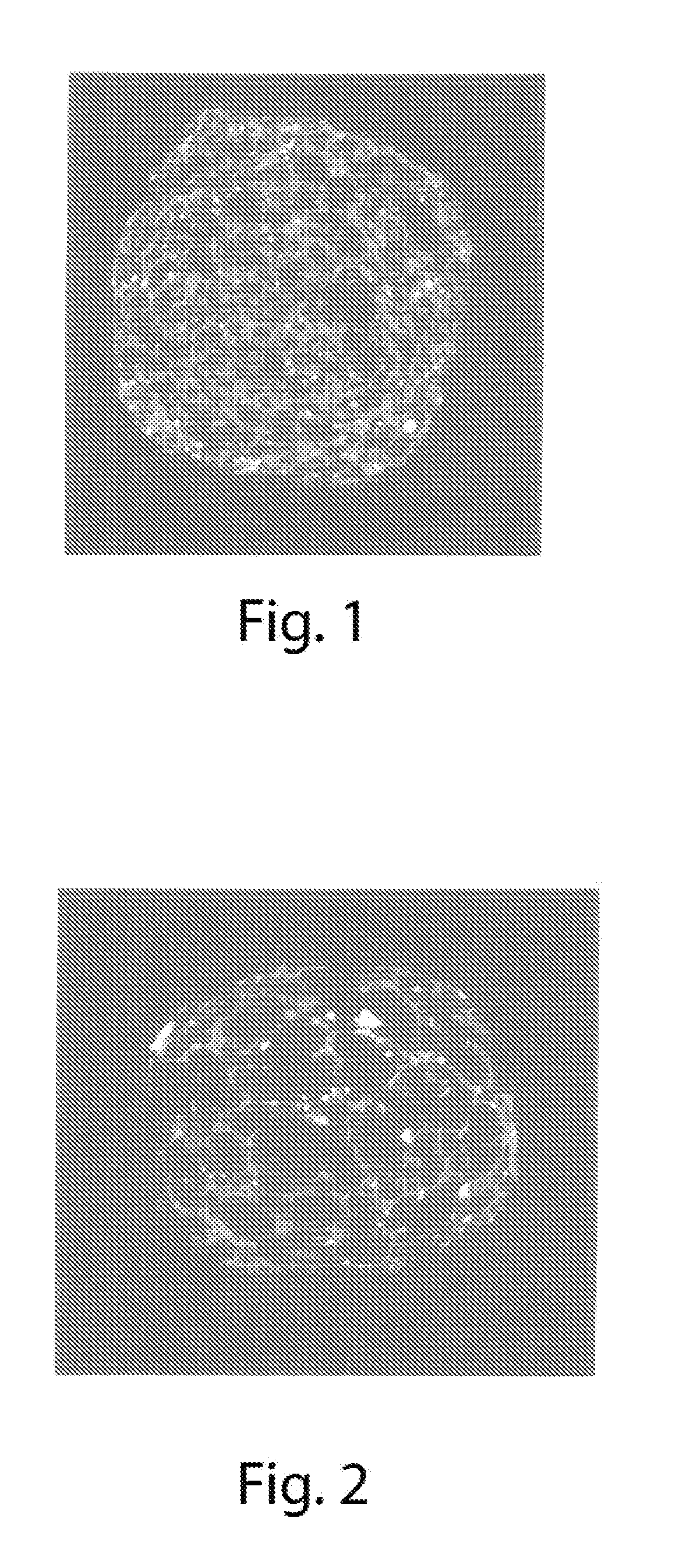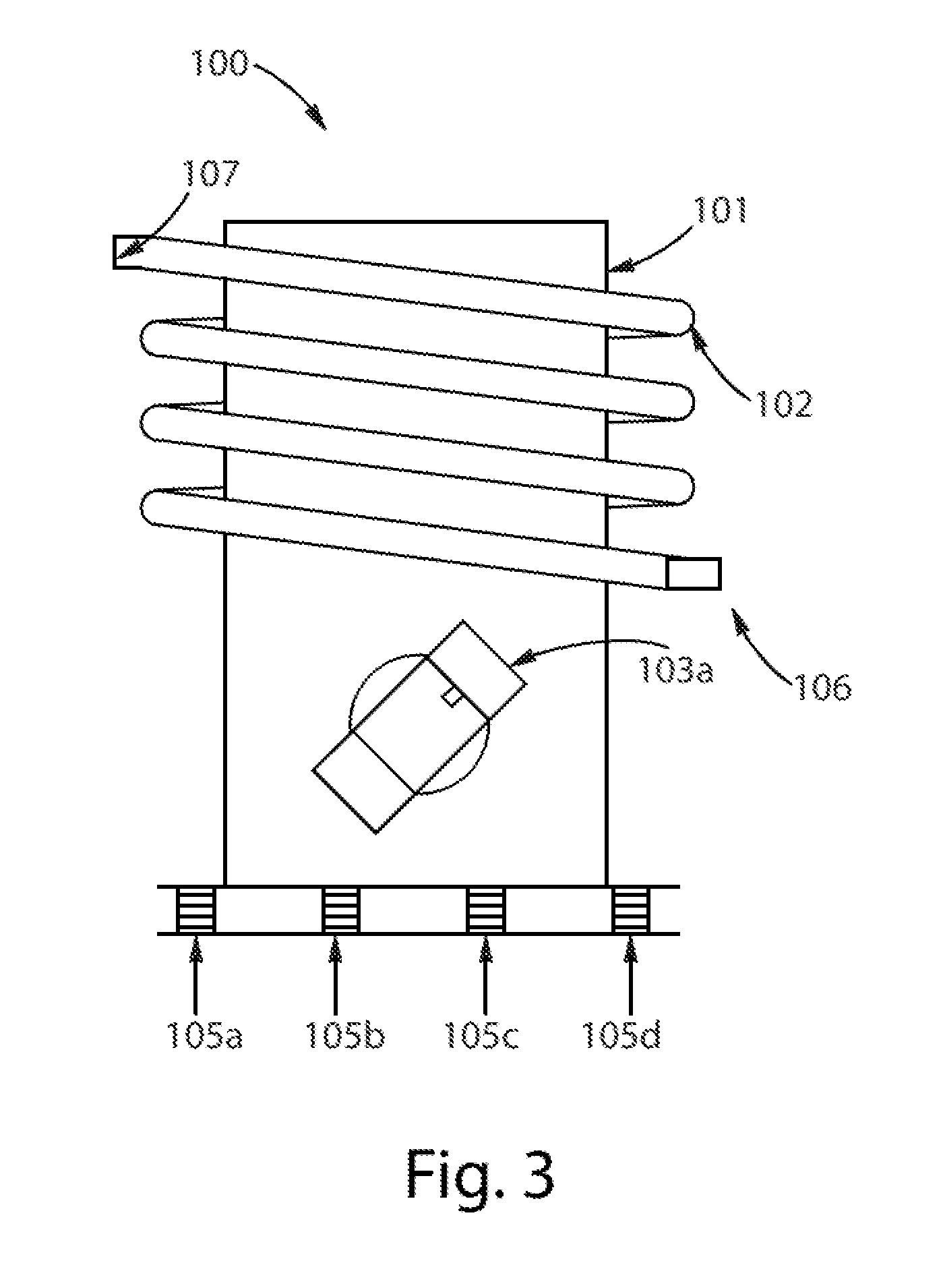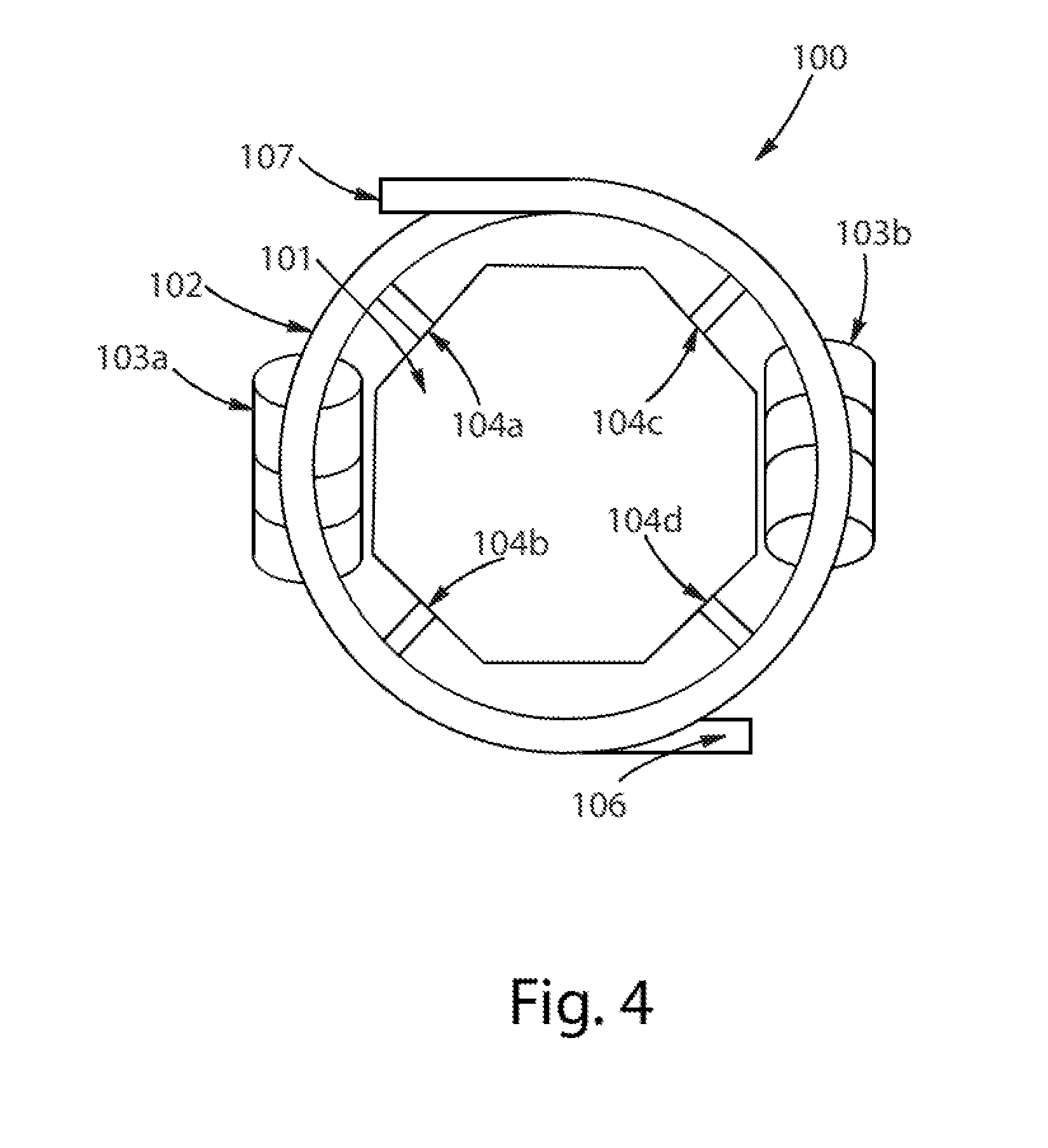Food sanitization
a technology for sanitizing food and drying food, applied in the field of sanitizing food, can solve the problems of inability to foolproof, insufficient cooking conditions, and inability to reduce water content of drying food, and achieve the effect of reducing bioburden
- Summary
- Abstract
- Description
- Claims
- Application Information
AI Technical Summary
Benefits of technology
Problems solved by technology
Method used
Image
Examples
example 1
Materials and Methods
[0067]About 6000 g of Iams® ProActive Health® Adult MiniChunk, a commercially available dog food kibble having a porosity of approximately 40%, was added to a 20 liter Forberg® fluidizing paddle mixer. The mixer was started at a speed of about 95 RPM, and about 300 g of 120 F poultry fat was sprayed over the mixing kibbles via an air-assisted spray nozzle (Spray Systems Inc.). The poultry fat was sprayed over the kibbles over about 60 seconds, then about 600 g of chicken meal was sprinkled over the kibbles over about 60 seconds. The chicken meal was analyzed to have a salmonella level of greater than 0.04 MPN (Most Probable Number) / gm by the DuPont BAX method. The mixer was then stopped and the coated kibbles were removed. Three 500-gram samples were collected from the coated kibbles. Each of the three samples was analyzed to have a salmonella level of greater than 0.04 MPN (Most Probable Number) / gm. Samples 1 and 2 were treated was cold plasma treated with an E...
example 2
Materials and Methods
[0069]Approximately 1 kg of salmonella-inoculated pet food kibbles were prepared by spraying the kibble with a culture containing Salmonella enteric serovars Westhampton, Livingstone, and Worthington. The kibbles were turned over and sprayed with additional culture. The kibbles were placed in a large plastic bag and the bag was shaken vigorously for about 1 minute to mix the kibbles. The targeted amount of total Salmonella on the kibbles was about 1000 cfu / g (colony-forming-units / gram). The kibbles were spread out in a tray and left to dry for 24 hours, then placed in a sealed bag prior to use. These salmonella-inoculated kibbles are used in the following examples.
example 3
Materials and Methods
[0070]Kibbles from Example 3 were used in this experiment. The plasma head of an Enercon Dyne-A-Mite HP cold plasma generator was mounted above a 16-oz paper bowl, which in turn sat on top of an elliptical shaker. The shaker ensured that the kibbles were well agitated during treatment so that all surfaces were exposed as much as possible to the plasma. Since the plasma is a gas, the gas could flow around the kibbles to a certain extent, and penetrate into the pores and crevices on the surface. Ten 50-g samples were withdrawn from the bag of inoculated kibbles. Five of the 50-g samples were control samples and were placed in individual plastic bags. The other five 50-gram samples were placed in individual paper bowls. Each paper bowl containing kibbles was treated with cold plasma as follows. The paper bowl with 50-g of kibbles was placed on the elliptical shaker, and the speed of the shaker was adjusted to about 250 RPM. The cold plasma head was mounted so that ...
PUM
 Login to View More
Login to View More Abstract
Description
Claims
Application Information
 Login to View More
Login to View More - R&D
- Intellectual Property
- Life Sciences
- Materials
- Tech Scout
- Unparalleled Data Quality
- Higher Quality Content
- 60% Fewer Hallucinations
Browse by: Latest US Patents, China's latest patents, Technical Efficacy Thesaurus, Application Domain, Technology Topic, Popular Technical Reports.
© 2025 PatSnap. All rights reserved.Legal|Privacy policy|Modern Slavery Act Transparency Statement|Sitemap|About US| Contact US: help@patsnap.com



